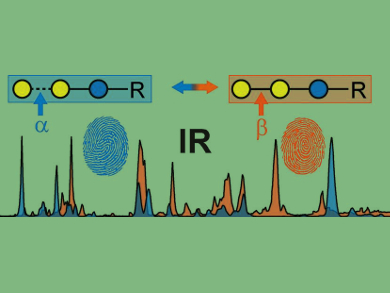Carbohydrates, which are also known as glycans, are essential in nature and play key roles in virtually every biological process. However, the tremendous structural diversity of glycans is a major challenge in their identification.
Kevin Pagel, Fritz Haber Institute of the Max Planck Society, Berlin, and Free University Berlin, both Germany, Gert von Helden, Fritz Haber Institute, and Peter H. Seeberger, Free University Berlin and Max Planck Institute of Colloids and Interfaces, Potsdam, Germany, and colleagues have shown that a combination of mass spectrometry (MS) and infrared (IR) spectroscopy can be used to disentangle the complex structure of carbohydrates.
Molecular ions were investigated using the Fritz Haber Institute’s IR free-electron laser. To avoid peak broadening from thermal contributions during the measurement, carbohydrate ions were embedded in superfluid helium droplets to cool them down to 0.4 K. The low-temperature environment enables a high spectral resolution, which results in unique vibrational fingerprints. Minute structural variations of isomeric glycans show distinct features in their IR signatures and allow a clear identification. According to the researchers, the approach has the potential to serve as a core technique for glycan sequencing.
- Glycan Fingerprinting via Cold-Ion Infrared Spectroscopy,
Eike Mucha, Ana Isabel González Flórez, Mateusz Marianski, Daniel A. Thomas, Waldemar Hoffmann, Weston B. Struwe, Heung S. Hahm, Sandy Gewinner, Wieland Schöllkopf, Peter H. Seeberger, Gert von Helden, Kevin Pagel,
Angew. Chem. Int. Ed. 2017.
DOI: 10.1002/anie.201702896
